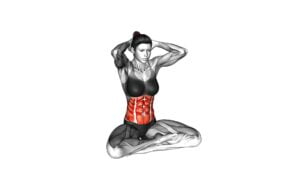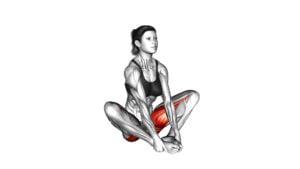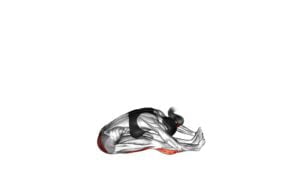Cow Yoga Pose Bitilasana (female) – Video Exercise Guide & Tips

Are you looking to improve flexibility and strengthen your core? Then cow yoga pose, or bitilasana, is the perfect exercise for you! In this video exercise guide, we'll show you how to perform this pose and provide helpful tips to ensure your success.
Watch This Exercise Video
With its numerous benefits and variations, cow pose is a great addition to any yoga routine. Get ready to feel the burn and achieve a healthier, more balanced body.
Let's get started!
Key Takeaways
- Cow Pose, also known as Bitilasana, can increase flexibility in the spine and improve the health of the spine.
- Practicing Cow Pose can help alleviate back pain and improve posture.
- Engaging the core and abdominal muscles is a key aspect of performing Cow Pose.
- There are variations of Cow Pose that target specific areas of the body and can be tailored to individual needs.
Benefits of Cow Pose
You will experience increased flexibility in your spine when practicing the Cow Pose. This yoga pose isn't only aesthetically pleasing but also provides numerous health benefits. One of the main advantages of the Cow Pose is that it helps to improve the health of your spine. As you arch your back and lift your chest, it creates a gentle stretch in your spinal muscles and ligaments, promoting flexibility and mobility. This increased flexibility can alleviate back pain and improve posture.
In addition to its effects on the spine, the Cow Pose also engages the muscles of the core and abdomen. As you move through the pose, you activate the muscles in your abdomen and lower back, helping to strengthen and tone these areas. This can lead to improved stability and balance in your daily activities.
Furthermore, the Cow Pose incorporates breathing exercises that promote relaxation and stress reduction. As you inhale deeply while arching your back, you expand your chest and increase your lung capacity. This deep breathing can help calm the mind, reduce anxiety, and improve overall mental well-being.
Now that you understand the health benefits of the Cow Pose, let's move on to learning how to perform this pose correctly.
How to Perform Cow Pose
To perform the Cow Pose, start by coming onto your hands and knees in a tabletop position. Make sure your wrists are directly under your shoulders and your knees are hip-width apart. Here's how to do it correctly:
- Inhale deeply, arching your back and lifting your chest towards the ceiling. Allow your belly to sink towards the floor.
- Drop your head slightly, but keep your gaze forward to maintain alignment.
- As you exhale, round your spine and tuck your chin towards your chest. Draw your navel in towards your spine.
- Repeat this flow smoothly, syncing your breath with the movement.
To deepen your Cow Pose, you can try the following:
- Engage your core muscles by pulling your belly button towards your spine.
- Press firmly into your hands and spread your fingers wide for a stronger foundation.
- Gently tilt your pelvis forward to increase the stretch in your lower back.
Common mistakes in Cow Pose include:
- Allowing the shoulders to collapse or hunching them towards the ears.
- Forgetting to engage the core and relying solely on the flexibility of the spine.
- Overarching the neck and straining it instead of keeping it neutral.
By avoiding these mistakes and focusing on proper alignment and engagement, you can get the most out of your Cow Pose.
Now, let's move on to explore the variations of this pose.
Variations of Cow Pose
Explore different variations of the Cow Pose to deepen your practice and target specific areas of the body.
One creative cow pose variation is the Extended Cow Pose. In this variation, start in the traditional cow pose position with your hands directly under your shoulders and your knees under your hips. As you inhale, lift your left arm and extend it forward, parallel to the ground, while simultaneously extending your right leg straight back, parallel to the ground. Hold this pose for a few breaths, feeling the stretch in your spine, shoulders, and hips.
Another variation is the Side-lying Cow Pose. Lie on your right side with your right arm extended overhead, palm facing down. Bend your left knee and place your left foot flat on the ground in front of your right thigh. As you inhale, press into your right hand and lift your upper body off the ground, arching your spine and looking up towards the ceiling. This variation targets the side body and helps to improve flexibility and mobility.
Exploring the therapeutic aspects of cow pose, you can try the Restorative Cow Pose variation. Begin in a seated position with your legs extended in front of you. Place a bolster or a rolled-up blanket behind you and sit on it. Lean back onto the support, allowing your spine to gently arch and your chest to open up. This variation is ideal for releasing tension in the lower back and calming the nervous system.
By incorporating these creative variations, you can enhance the benefits of the cow pose and tailor it to your specific needs.
Now let's move on to some tips for a successful cow pose.
Tips for a Successful Cow Pose
To achieve a successful Cow Pose, ensure that you maintain a steady and controlled movement throughout the exercise. This will help you reap the full benefits of the pose and avoid common mistakes.
Here are some tips to help you perfect your Cow Pose and incorporate it into your yoga flow:
- Alignment is key: Start by aligning your wrists directly under your shoulders and your knees under your hips. This will create a stable foundation for the pose and prevent unnecessary strain on your joints.
- Engage your core: As you move into Cow Pose, remember to engage your core muscles. This will help you maintain stability and control throughout the movement.
- Coordinate with your breath: As you inhale, arch your back and lift your chest towards the ceiling, allowing your belly to drop towards the ground. Exhale as you round your back, drawing your belly button towards your spine. Coordinating your breath with the movement will enhance the flow of energy in your body and deepen the stretch.
Incorporating Cow Pose into your yoga flow can bring balance and flexibility to your practice. Remember to listen to your body and modify the pose as needed. With practice and attention to detail, you can achieve a successful Cow Pose and enjoy its many benefits.
Precautions and Modifications for Cow Pose
Take precautions and make necessary modifications to ensure a safe and effective practice of the Cow Pose. If you're a beginner, it's important to approach this pose with caution. Start by gently warming up your body with some gentle stretches and movements. Listen to your body and only go as far as feels comfortable for you. Avoid pushing yourself too hard or forcing any movements.
For those with lower back pain, modifications can be made to alleviate any discomfort. If you find that the traditional version of the Cow Pose puts too much strain on your lower back, try placing a blanket or bolster under your knees for support. This can help to relieve pressure and provide extra cushioning. Additionally, you can also choose to perform the pose with your hands on the floor instead of reaching overhead. This modification reduces the extension in the lower back and can be more accessible for those with sensitivity or pain in that area.
Remember, it's important to listen to your body and modify the pose as needed. Always consult with a qualified yoga instructor or healthcare professional if you have any concerns or specific conditions.
Frequently Asked Questions
How Long Should I Hold the Cow Pose?
When practicing the cow pose, it's important to consider how long you should hold it. The duration can vary depending on your fitness level and comfort. Beginners may start with holding the pose for 10-15 seconds and gradually increase the time as they become more comfortable.
Holding the cow pose helps to stretch the spine, improve posture, and release tension in the back. Incorporating this pose into your daily yoga routine can bring numerous benefits to your body and mind.
Can I Do the Cow Pose if I Have Lower Back Pain?
If you're dealing with lower back pain, you might be wondering if it's still safe to do the cow pose. It's important to listen to your body and make modifications if needed.
The cow pose can actually be beneficial for back pain as it helps to stretch and strengthen the spine. However, it's crucial to consult with a healthcare professional or a qualified yoga instructor to ensure you're doing the pose correctly and avoiding any further discomfort.
Is It Necessary to Warm up Before Attempting the Cow Pose?
Before attempting the cow pose, it's important to warm up your body. A proper warm up helps to increase blood flow, loosen muscles, and prepare your body for the pose. It also helps prevent injuries, especially for beginners.
It's recommended to start with gentle stretches and movements to warm up your spine and lower back. Remember to listen to your body and take precautions if you have any existing conditions or injuries.
Can Pregnant Women Safely Practice the Cow Pose?
During pregnancy, it's important to consider modifications for certain yoga poses. When it comes to the cow pose, it can be a safe and beneficial exercise for pregnant women. This pose helps to stretch the spine and relieve back pain, which is common during pregnancy. Additionally, it can help improve posture and increase circulation.
However, it's always recommended to consult with your healthcare provider before starting any new exercise routine during pregnancy.
What Are the Mental Benefits of Practicing the Cow Pose?
Practicing the cow pose, also known as Bitilasana, has several mental benefits. It can help you achieve mental clarity by focusing your mind on the present moment and connecting with your breath.
This pose also promotes stress relief as it stretches your spine and releases tension in your back, neck, and shoulders. By incorporating the cow pose into your yoga practice, you can experience improved mental well-being and a greater sense of calmness.
Conclusion
In conclusion, practicing the cow pose, also known as bitilasana, can bring numerous benefits to your body and mind.
This pose helps to stretch and strengthen your spine, improve posture, and increase flexibility in your neck and shoulders.
By following the correct technique and incorporating variations, you can enhance the benefits of this pose.
Remember to listen to your body, make necessary modifications, and seek professional guidance if needed.
Start incorporating cow pose into your yoga routine and experience its positive effects.

Author
Years ago, the spark of my life’s passion ignited in my mind the moment I stepped into the local gym for the first time. The inaugural bead of perspiration, the initial endeavor, the very first surge of endorphins, and a sense of pride that washed over me post-workout marked the beginning of my deep-seated interest in strength sports, fitness, and sports nutrition. This very curiosity blossomed rapidly into a profound fascination, propelling me to earn a Master’s degree in Physical Education from the Academy of Physical Education in Krakow, followed by a Sports Manager diploma from the Jagiellonian University. My journey of growth led me to gain more specialized qualifications, such as being a certified personal trainer with a focus on sports dietetics, a lifeguard, and an instructor for wellness and corrective gymnastics. Theoretical knowledge paired seamlessly with practical experience, reinforcing my belief that the transformation of individuals under my guidance was also a reflection of my personal growth. This belief holds true even today. Each day, I strive to push the boundaries and explore new realms. These realms gently elevate me to greater heights. The unique combination of passion for my field and the continuous quest for growth fuels my drive to break new ground.







